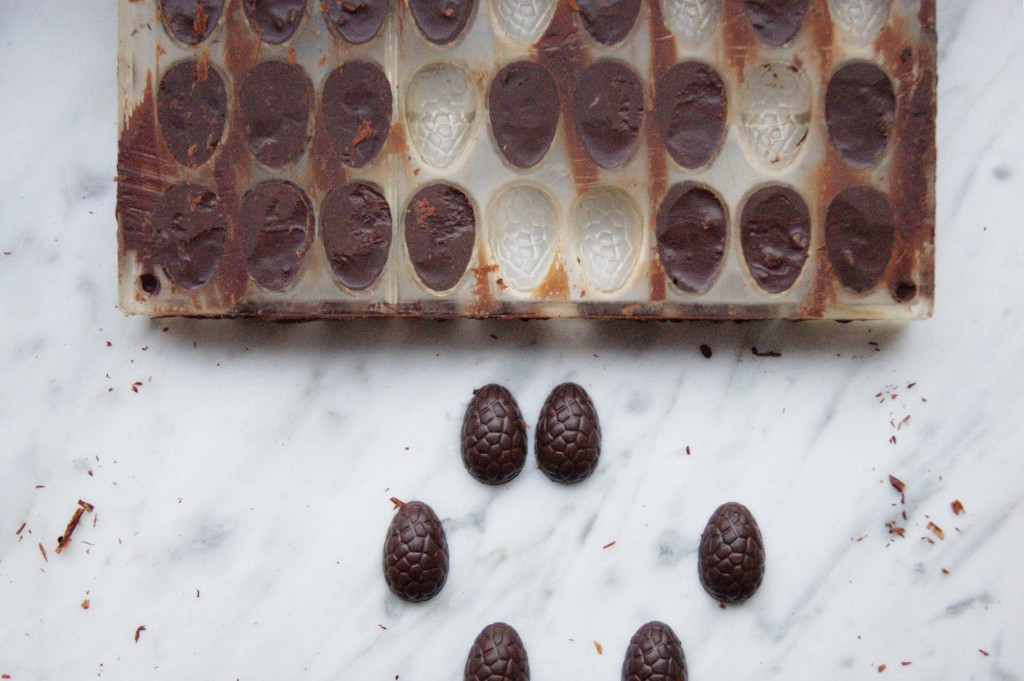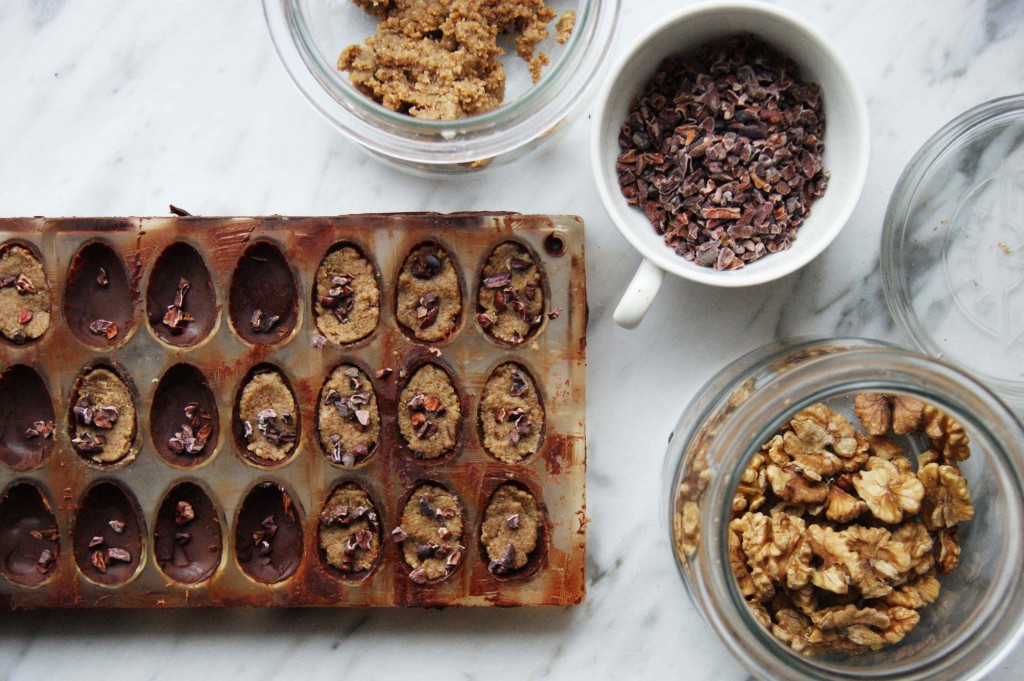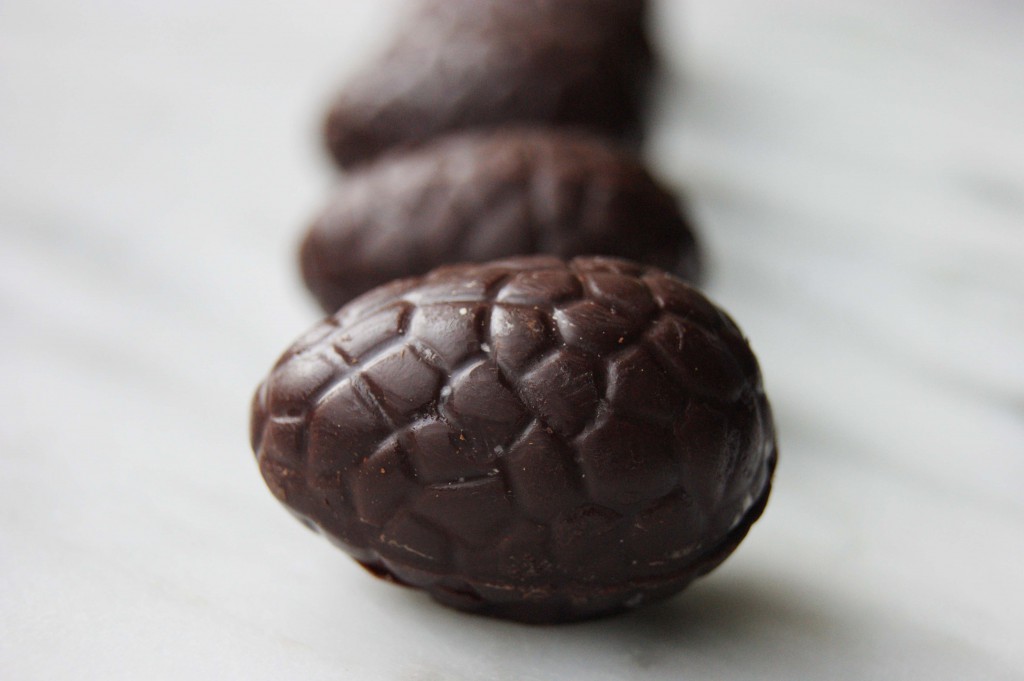
It’s Easter time, the best time of the year. Spring is hanging around and easter eggs are hidden in the garden. Families are meeting, chocolates are eaten.
Chocolate could be my biggest indulgence in life, I love it and I don’t feel the slightest need to stop this love. I like it strong, black and refined sugar free. But I have to admit, too much is never ok, which brings me to the American painter, Lee Price.


Price paints about food, about her relationship with food, about food as a drug. Her art strikes me in resemblance, watching her paintings makes me feel as if I’m looking at myself. Her photorealistic self-portraits are poetically captured; with soft colors and watery bathtubs, she reveals a problematic subject into a world of prettiness. There’s also a sort of humor and absurdity that bind it all together. Her work can make you smile, but then you realize it’s real. She tells the story of her own eating disorder, the story of hiding her appetite for food and life and binging in solitude places as a reaction to this. Lee states: “In this society, there’s so much pressure for women to be thin. We’re not supposed to have appetites – and not just for food, but for a lot of things. We’re the givers and not the consumers, and I think some of my recent paintings are about the women staring at the viewers and saying, ‘I’m not going to censor my appetite’.”
The duality of a love for food that becomes hate, because of over-loving it, is difficult and like all aspect in life, needs balance. Another balance to maintain in life is the omega 6/omega 3 balance. So let’s talk about fats. The fats we mostly eat and store in our body (acylglycerols) consist of fatty acids (acyl group) that are bound to an alcohol (glycerol). They can have one, two or three fatty acids in their structure. Omega 6 and omega 3 are fatty acids. There is one essential omega 3 fatty acid, Alpha-Linolenic Acid (ALA) and one essential omega 6 fatty acid, Linoleic Acid (LA), which means that our body cannot produce them, so we must obtain them from our diet. The omega 3 and omega 6 essential fatty acids are transformed by the enzymes in our body into the other non-essential fatty acids. It is not only important to consume both omega 6 and 3, it’s also important to consume them in the right ratio. In Western diets, there is a deficiency in omega 3 fatty acids and an excess of omega 6 fatty acids. Because the enzymes that do the converting are the same for omega 6 and 3, excess omega 6 fatty acids may inhibit the transformation of omega 3. This imbalance may cause diseases like cardiovascular disease, cancer, inflammatory and autoimmune diseases.
Good sources of omega 3 are leafy green vegetables, fresh fruit and vegetables, ground(!) flax seeds, chia seeds, hemp seeds, cold water fish and algae. Sesame seeds and sunflower seeds are good omega 6 sources. Some seeds or nuts like pumpkin seeds and walnuts contain a significant amount of omega 3, but also contain omega 6, which makes it import to combine them with omega 3 sources.
Enough said about fat. Today, let us fulfill the desires, eat some balanced chocolate and enjoy life.
This chocolate eggs recipe contains a walnut filling, which will always give you a good excuse to be eating them. Adding omega 3 to your diet is important, you know.
Also, you want to temper your chocolate to give it the perfect shine and snap. Cocoa butter consist of several fatty acid crystals. Each of these fatty acids solidifies at a different temperature. By melting your chocolate, the crystals will seperate, so you want to reorganize your fatty acid crystals into a stable form. This stable crystallization is done by using the right temperatures at the right time. The temperatures used here are for dark chocolates; different temperatures are needed for milk or white chocolate.

RECIPE
Ingredients, makes 13
Walnut filling
100 g raw walnuts
25 g coconut blossom sugar
25 g cacao nibs
Chocolate
60 g raw cocoa paste (also called cocoa liquor), cut into small chunks
30 g raw cocoa butter, cut into small chunks
10 g coconut blossom sugar
Directions
For the walnut filling, combine the walnuts and coconut blossom sugar into a food processor with an S-blade and process untill a thick paste is formed. Stir in the cacao nibs with a fork.
For the chocolate, start by finely grounding your coconut blossom sugar in a coffee grounder or a blender. It should look and feel powdered. Pour it through a sieve to eliminate possible lumps. It is a good idea to make a larger batch and to store the powdered sugar for when you need it.
Melt your cocoa butter au bain marie until you reach a temperature of 46º-49ºC (115º-120º F). Add the cocoa butter and the powdered coconut blossom sugar and let the temperature drop to 29 °C (84 ° F). Let the temperature rise until 32 °C (90 ° F) max. Your chocolate is tempered now and ready to be used.
For making these Easter eggs, I used a mold. Alternatively, you could shape your walnut fillings first by rolling it into small balls and then covering them with chocolate, by sticking a toothpick into them and dipping them into your melted chocolate.
When using a mold, pour in the chocolate and make circular movements to get it all coverd. Pour out the remaining chocolate and keep it at the right temerature (32 °C (90 ° F) max), to use it later on. Let your chocolate harden.
Fill your eggs by stuffing some of the walnut paste in. Flatten the top and make sure there is no filling coming out of your mold. Pour over the remaining chocolate and let it harden again. Slice off the chocolate at the upper side of your mold with a kitchen knife, so you are able to see and demold your chocolates. Do this by flipping the mold, open side down, and tapping it on your workspace. Your eggs should just fall out.
To make full eggs, shortly melt the flat sides on a hot plate and press the halves together until solidified. Et Voila.


